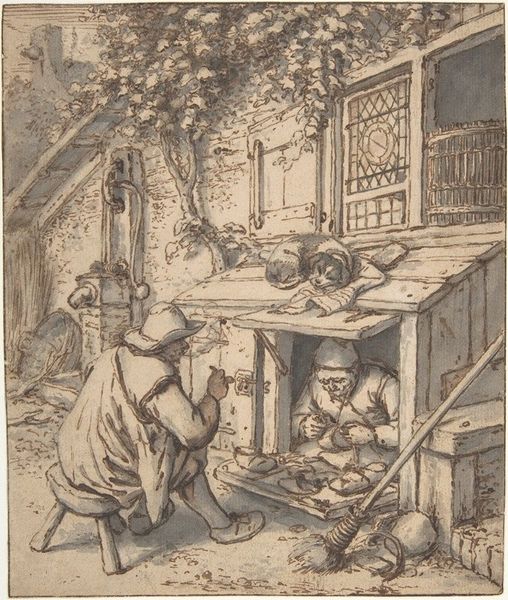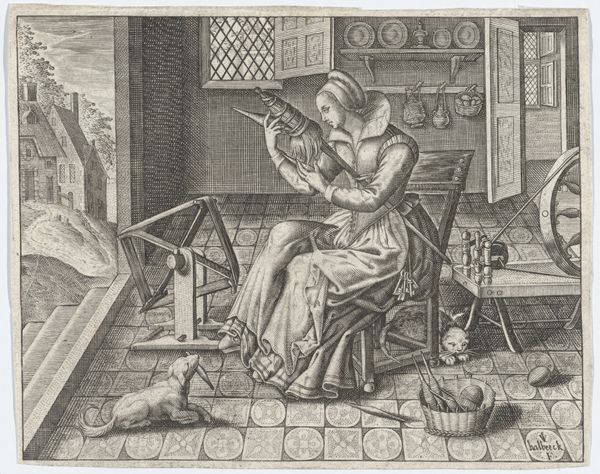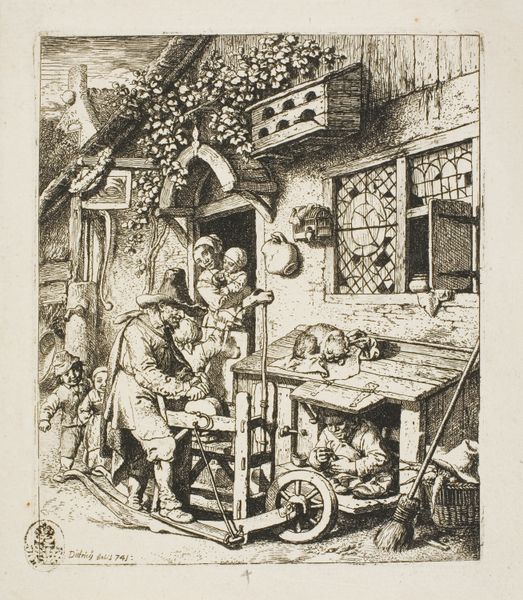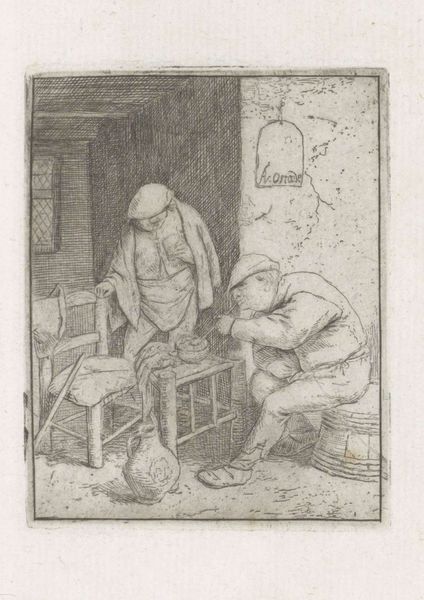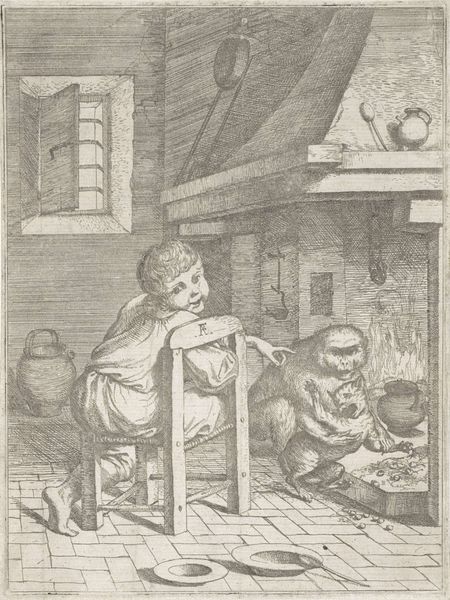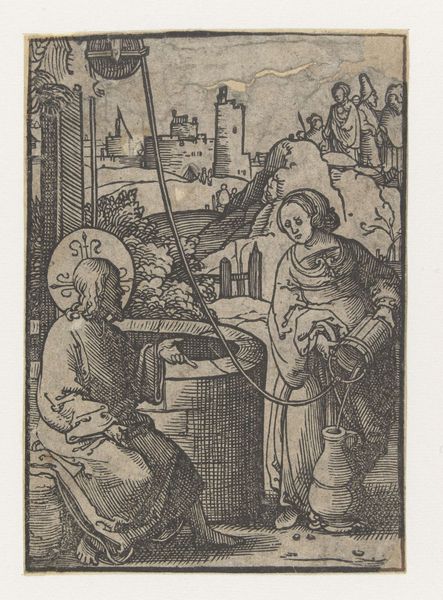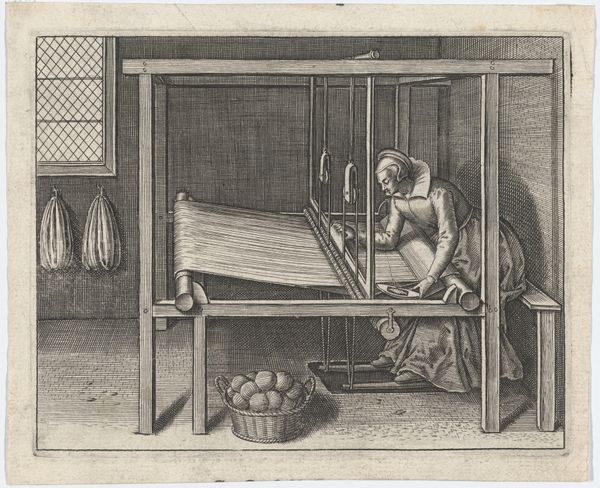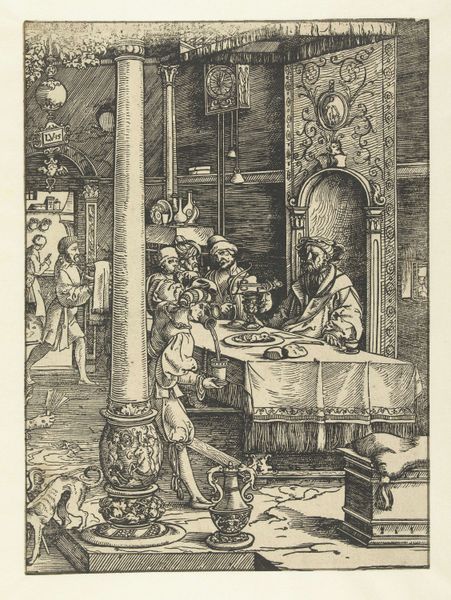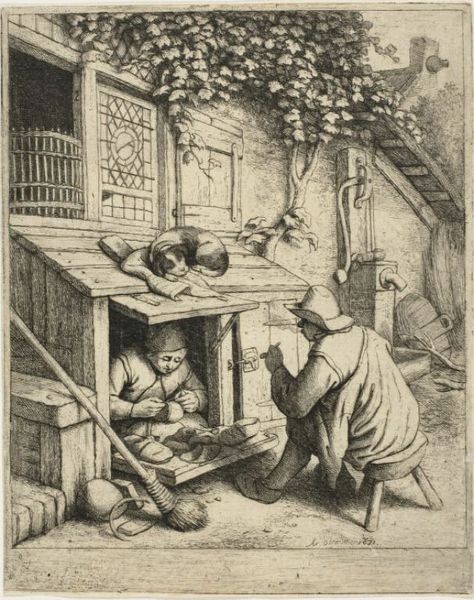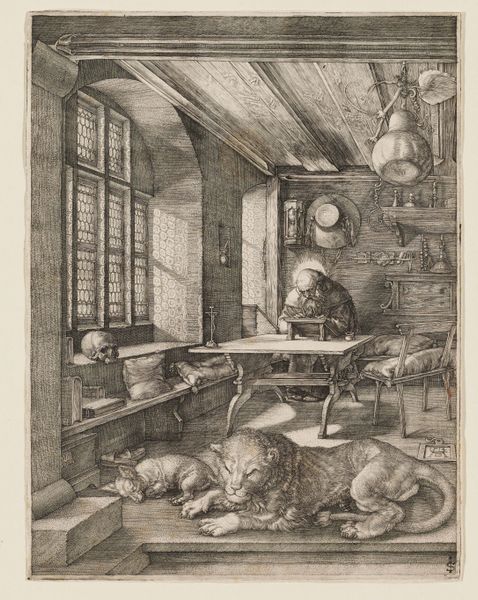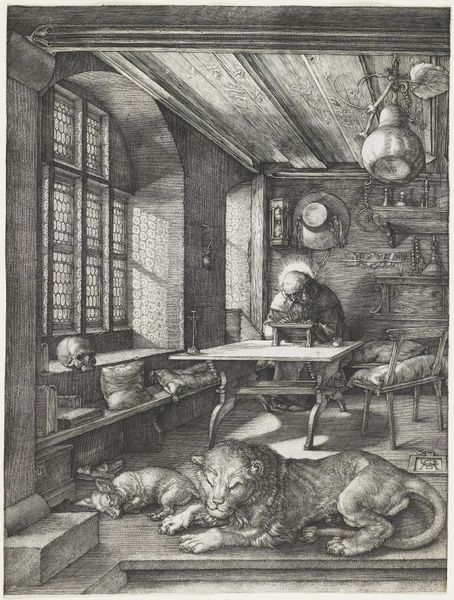
print, etching
#
baroque
# print
#
etching
#
dog
#
landscape
#
caricature
#
figuration
#
portrait drawing
#
genre-painting
Dimensions: height 175 mm, width 148 mm
Copyright: Rijks Museum: Open Domain
Editor: This etching, "Schoenmaker," by Jacob Hoolaart, probably made somewhere between 1723 and 1789, seems to depict the simple, everyday life of a shoemaker. What strikes me is the intimacy of the scene. It looks like a glimpse into a small workshop and family. What's your take on it? Curator: This print invites us to consider the labor involved in even the most ordinary objects. Etchings themselves were a reproductive technology. Hoolaart made a print of shoemakers. Think of all the labor concentrated there! Editor: So, you mean the layers of work... the artist's work and the craft of shoemaking, which is also labor? Curator: Exactly. This piece gives us an opportunity to think about the networks of making, production, and distribution inherent in this artwork. Etchings made art accessible, didn't they? What impact did this democratization of images have on society? Editor: That’s a good question, I suppose people who couldn't afford an original painting could own a print. I never considered it in that light. It's about access and affordability of art. Are you suggesting that we also reflect on the tools involved in each kind of craft? Like the shoemaker's tools or the etching tools of the artist? Curator: Precisely! Think of the engraver’s tools, the press…all of the materials that went into producing the print itself: paper, ink, the etcher’s needle. Thinking materially really complicates assumptions about value. What makes art 'high' and craft 'low?' Editor: That's really interesting! I'll definitely look at prints with new eyes now, focusing on the process and all the people involved. Curator: Me too! Thanks to our dialogue, I'll question more and more the traditional values attributed to paintings and consider labor of every type.
Comments
No comments
Be the first to comment and join the conversation on the ultimate creative platform.

